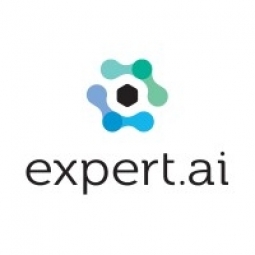Product
- expert.ai technology
Tech Stack
- Semantic Engine
Implementation Scale
- Enterprise-wide Deployment
Impact Metrics
- Productivity Improvements
- Customer Satisfaction
Technology Category
- Analytics & Modeling - Data-as-a-Service
Applicable Functions
- Product Research & Development
Use Cases
- Search & Rescue
Services
- Data Science Services
About The Customer
Reed Business Information is a provider of industry-specific information and analytics. They specialize in various fields including scientific, technical, legal, medical, and more. Their customers value the quality of their content and use it as a basis for making important business decisions. The company has a vast portfolio of content that they wanted to make more accessible and relevant to their customers.
The Challenge
Reed Business Information, a specialized provider of industry-specific information and analytics, faced a challenge in ensuring that customers could easily access relevant information in a timely and accurate manner. With a vast amount of content across their portfolio, the company wanted to improve the way customers locate specific topics. The goal was to enhance the quality of their content and make it more accessible for customers who rely on it for important business decisions.
The Solution
To address the challenge, Reed Business Information adopted expert.ai technology. This technology leverages automatic language comprehension capabilities and customizable media taxonomies. By better tagging and organizing their entire content library, customers were able to locate content on specific topics with much improved accuracy. For instance, a customer may require news about topics such as fuel prices, economic indicators for specific countries, or environmental sustainability, all within the context of the automotive industry. Once they have defined their search criteria, Reed Business Information’s semantic engine filters relevant news articles across hundreds of information sources. To ensure the highest quality results, the company deploys special moderators to review the content for accuracy relative to customer criteria.
Operational Impact

Case Study missing?
Start adding your own!
Register with your work email and create a new case study profile for your business.
Related Case Studies.
Case Study
Software Development Partnership with WEINMANN Emergency: Enhancing Medical Technology
WEINMANN Emergency, a Hamburg-based medical technology company, was facing challenges in developing new medical devices. The company needed to expedite the process of bringing new products to the market while ensuring compliance with medical standards and regulations. The primary goal was to speed up the development and release of their MEDUCORE Standard² solution, a portable defibrillator. The company required a technology partner with expertise in embedded Linux software development, the capacity to assemble a strong engineering team quickly, and a cost-effective cooperation model. The challenges included implementing a secure communication protocol with a telemetry server, securely uploading user session data and device logs, fixing multithreaded data access issues, building Wi-Fi network connections, improving Bluetooth printer support, and ensuring compliance with security regulations.

Case Study
Mellanox Technologies: Leveraging Cloud for Data-Driven Solutions
Mellanox Technologies, a multinational supplier of computer technology networking products, was facing challenges with its testing, research, and design infrastructure. The company, with multiple manufacturing sites worldwide, needed an infrastructure that was engineered for integration, easy data sharing, scalability, and unified support. The existing system was not providing the performance and reliability required to accelerate product innovation. Mellanox also needed to reduce the time to market for its products, including adapters, switches, software, cables, and silicon products for markets such as high-performance computing. The company was in search of a unified solution that was reliable, scalable, and cost-effective.
Case Study
Transforming Healthcare Support with AI: A Case Study of Sipssa Medicina Privada
Sipssa Medicina Privada, a renowned prepaid health insurance company in Argentina, was grappling with the challenge of reducing response times for its members. The company was experiencing delays of up to 48 hours in responding to queries through phone and email channels. The need for 24/7 availability and immediate responses was paramount to enhance their relationship with members. The company aimed to reduce pending messages, provide round-the-clock customer service, receive online referrals from potential members, rate representative service in customer experience, improve customer service by providing adequate information, optimize and measure response times in each process, and systematize processes without needing representative assistance.
Case Study
Automating Form Processing in Whitewater Rafting Business
Kern River Outfitters, a family-owned whitewater rafting business, was facing a significant challenge in managing its day-to-day operations. The company, which provides guided rafting tours in Idaho, Oregon, and California, generates thousands of online waivers for its adventure activities. These waivers are not just simple forms; they include detailed information such as allergies, emergency contact info, and more. The process of manually entering this data into their Customer Relationship Manager (CRM), Streak, was time-consuming and monotonous. The adventuring season, which lasts from April or May through the entire summer, meant that the number of waivers the company had to process was in the thousands. This tedious task was taking away valuable time that could be spent on other aspects of the business.

Case Study
Chunghwa Telecom's Successful Implementation of Verimatrix Technology for IPTV and OTT Disaster Recovery
Chunghwa Telecom, Taiwan's largest telecommunications company, was seeking to create a comprehensive disaster recovery solution for its IPTV and over-the-top (OTT) networks. The company had two geo-redundant data centers in Taipei and Tainan, servicing customers in the northern and southern regions respectively. The challenge was to achieve multiple layers of geographic redundancy, allowing each regional data center to failover to its respective backup regional data center, without any failover between the northern and southern regions. Each distinct user base was to be managed independently, but with synchronization of all content ingestion occurring in the northern data centers, then being synchronized with southern data centers. The company also needed to ensure that each of the data centers could failover transparently to the end subscriber in the event of a major failure or natural disaster.
Case Study
High-Speed Transfers and Automation: BT Sport's New Production Hub
BT Sport, a collection of sports channels offered by the BT Group in the UK, needed a high-speed file transfer solution to support ad hoc ingest and distribution as well as power automated data replication to an offsite data recovery center. The vision of BT Sport could only be realized with a new, state of the art broadcast facility. Timeline Television, BT Sport's technical partner, had less than six months to build out the broadcast centre from an empty shell into a 24 hour-a-day operation, including the simultaneous roll-out of a fully automated disaster recovery system. They quickly identified the need for a robust, high-speed transfer platform from a trusted vendor, to power the intense file-based production workflows and meet the project’s aggressive timescale. The platform needed to support secure high-speed transfer at multi-gigabit speeds, allow fully automated end-to-end workflows including ad hoc content ingest, review, approval and distribution, and offer reliable, secure data replication of petabytes of media from BT Sport’s main site in London’s iCITY to the disaster recovery and continuity facilities located at the iconic BT Tower.







